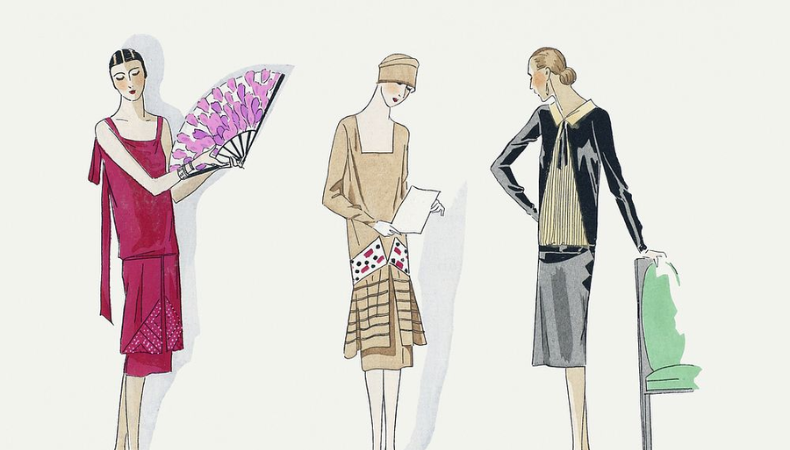Worst Fashion Styles of 2024: A Middle Eastern Perspective

Fashion is a dynamic and somewhat personal field where trends always wax and flow. But some developments in 2024 have attracted strong criticism, particularly given Middle Eastern sensibilities. Here are some of the most notable fashion blunders of this year, considering how they relate—or fail to relate—within the Middle Eastern cultural and aesthetic standards.
Western Trends Deviant from Middle Eastern Values
Too revealing attire
In many Western fashion circles, exposing clothing has become more trendy with short hemlines, plunging necklines, and pure materials front stage. These customs, meanwhile, can contradict the strongly ingrained Middle Eastern cultural values of modesty. In places where conservative attire is not only a sign of respect but also a rule, this style of attire could be regarded as provocative and even disrespectful. Adoption of these Western forms without consideration for local customs has been highly disapproved upon.
Baggy and ill-fitting clothes
Considered as a statement of comfort and nonchalance, big, loose-fitting garments has been a main trend in Western fashion. But in the Middle East, where tailored, fitting clothes is frequently preferred, this technique could come across as irresponsible and improper, especially in more formal or traditional settings. Sometimes the absence of form and structure of such clothes runs against the respect of elegance and sartorial correctness in the area.
Odd and quirky pairings
Western fashion has embraced quirky ever more with strong, contradictory designs and increasingly common experimental textiles. While in the West this could be praised as a way of artistic self-expression, in the Middle East where harmony in color and design is much valued, such pairings can be considered as chaotic and bad taste. The emphasis on balance and artistic coherence of Middle Eastern dress gives these Western freaks an amazing and understated beauty.
Middle Eastern Style Errors
Unneeded Rhinestones & Glitter
Middle Eastern fashion favors rhinestones and glitter, although there is a fine line separating elegance from excess. Overuse of these elements can convert an outfit from exquisite to gaudy less sophisticated, therefore negating the usually sought-after elegance in Middle Eastern fashion. Critics of this over-embellishment have noted that it gives clothes an impression of youth or unnecessarily fragile, therefore damaging the timeless elegance many in the region aspire for.
Deep cultural value rests in traditional Middle Eastern attire includes kaftans and abayas, which follow out-of-date conventions in style. These garments run the risk of looking frumpy or outdated, but if they are not updated or styled with a modern touch, they will look that way. Too voluminous or overly elaborate reproductions of these ancient clothing may not appeal to younger generations that desire to merge history with modernism without modern tailoring or design innovation.
Ignoring modesty standards from other cultures
Fashion is evolving generally in line with more open and exposing styles. Still, many Middle Eastern nations have their primary approved clothing code based on modesty. One could argue that one is disrespectful by choosing designs that show too much skin or are deemed unacceptable by ignoring cultural norms. Middle Eastern fashion sometimes ignores this blend between respect of traditional and religious standards and personal expression; these designs are sometimes condemned.
Cultural Sensibility and Fashion
Fashion is tightly associated with values and cultural identification even if it is a great way of self-expression. Middle Eastern cultural norms and global fashion trends crossing in 2024 underscore the importance of cultural sensitivity. While fashion should allow one to convey special originality, it is also crucial to respect the customs and values of the cultures in which these kinds of expression are worn.
Knowing and respecting local standards can help anyone negotiating the complex world of fashion—especially in a culturally diverse and varied region like the Middle East—to produce a modern and suitable style. This consciousness ensures that fashion respects the cultural surroundings where it is displayed in addition to reflecting personal tastes.
Keep On Reading
Impact Outside Borders: Global Viewpoint
Beyond the Middle East, these design errors have drawn criticism that affects the fashion industry globally. As Middle Eastern influence increases, international designers and companies are giving Middle Eastern tastes and sensibilities more and more value. Customers from Middle Eastern countries rejecting some Western trends informs us that fashion cannot be applied everywhere without consideration of cultural context.
The global fashion industry needs to manage the careful balance between creativity and respect of legacy in places like the UAE, where fashion is a key aspect of social life and identity. Knowing the cultural nuances of their audience enables designers to create not only aesthetically pleasing but also respectful designs for the many cultural tapestry they intend to present.







